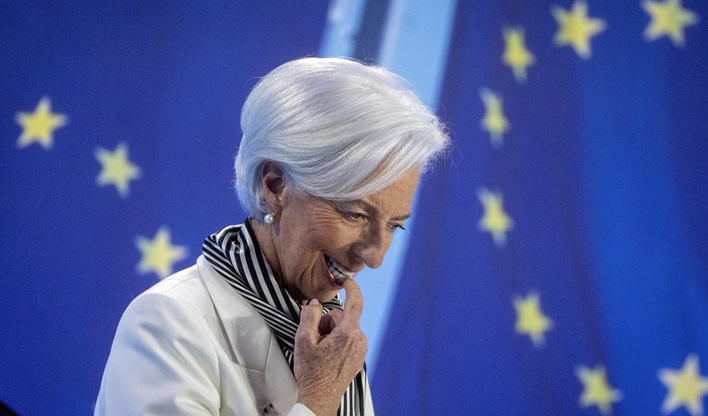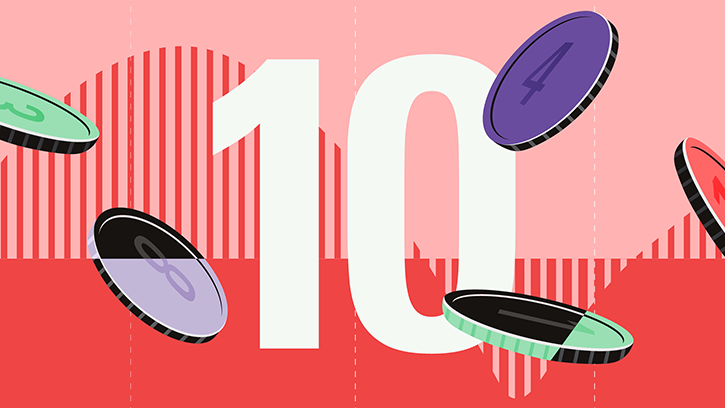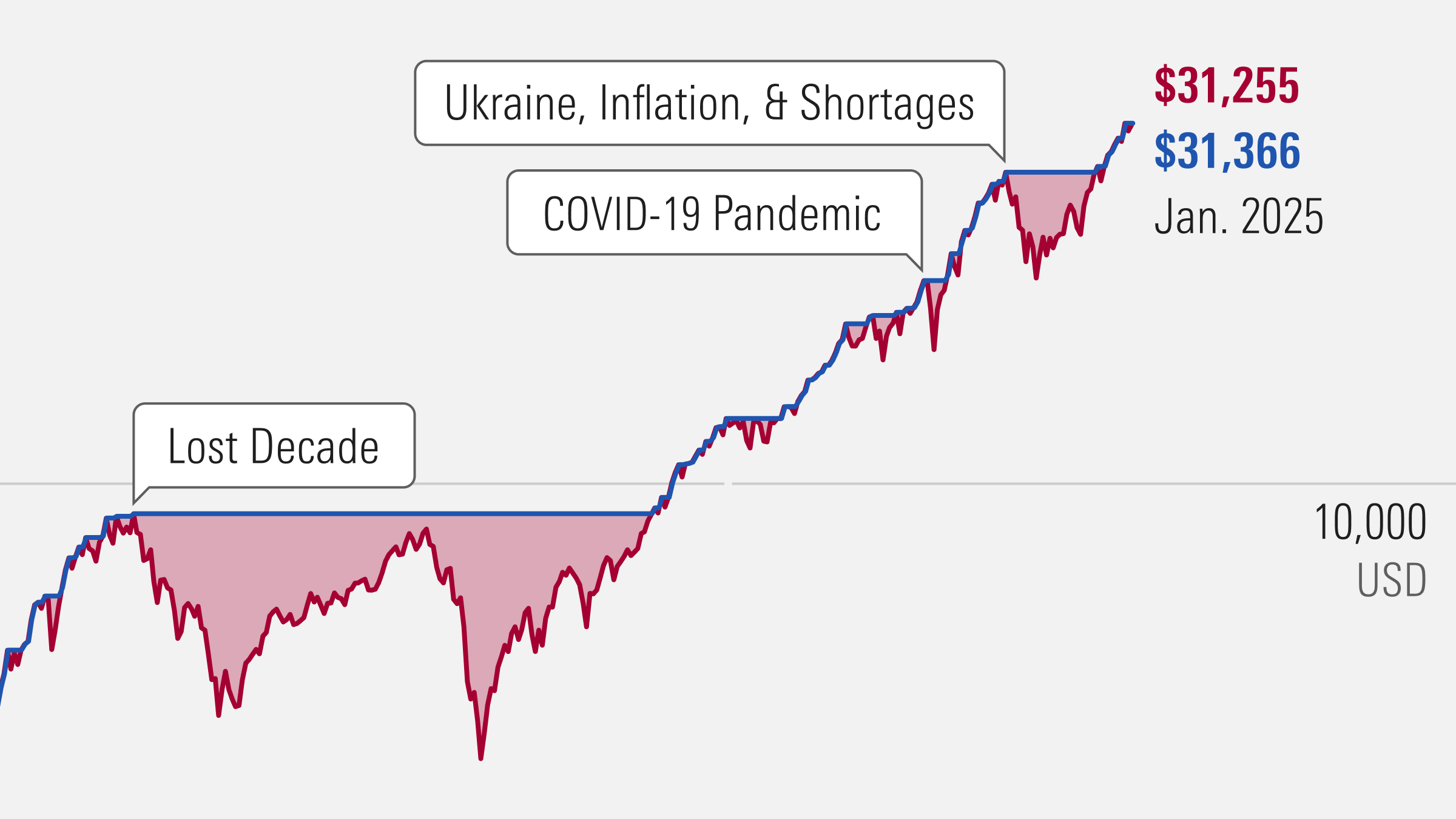
After the European Central Bank cut the deposit facility rate by 25 basis points, on Thursday, Oct. 17, markets are now pricing in another cut at the next meeting in December. Economists are now weighing up the path of inflation, weaker growth in countries like Germany and the impact on fixed-income markets.
President Christine Lagarde at the monthly press conference did not provide any guidance on the future path of rates, putting the emphasis instead on falling inflation and weak economic data. Expectations after the meeting diverged among market commentators. For some, the path ahead is clear: interest rates need to be cut quickly in back-to-back meetings. For others the ECB guidance was entirely unchanged, and “a data-dependent and meeting-by-meeting approach” will continue, meaning a succession of rate cuts is not a done deal.
According to Seema Shah, chief global strategist at Principal Asset Management: "It has become increasingly evident that gradual ECB monetary easing is insufficient and that back-to-back rate cuts are necessary.”
Shah thinks that inflationary pressures may continue to stress the central bank, but “the troubling state of the euro area economy suggests that the path forward is fairly clear."
Ulrike Kastens, European economist at DWS, expects further significant rate cuts in the coming months, “especially as the debate over the economy's weakness gains momentum between now and the next ECB meeting in December”.
The ECB is sticking to the same script, according to Henry Cook, senior European economist at MUFG, with the data-dependent approach continuing. Looking ahead, he thinks that the December meeting ”looks like a possible juncture for any shift away from the current flexible stance and towards a firmer commitment to future easing.”
Eurozone Disinflation? Be Prepared for Stagflation
Markets are pricing a 2% terminal or "neutral" interest rate sooner than expected, because of the current disinflation and increasing risks to economic growth. Recession is not the base scenario so far, but investors should be prepared for different scenarios, experts say.
“The idea that economic slowdown equals lower inflation has proven inadequate in the past, leading central banks to misjudge inflation as transitory. Although the ECB claims to be data-dependent, it seems to focus on those that fit its traditional model, neglecting the risk of stagflation-a mix of stagnation and inflation”, Pablo Duarte, senior research analyst at Flossbach von Storch Research Institute, tells Morningstar.
He argues that the money supply continues to increase without corresponding real economic growth.
“More money chasing fewer assets typically leads to higher prices, while lower rates encourage credit growth”, he says, adding that “it is clear that although the ECB is pursuing a deflationary stance, significant inflationary risks remain”.
Are Inflation Expectations Too Low?
ECB President Lagarde stressed that “disinflation process is on track”. Still, economists do not have a unanimous view on where eurozone inflation is heading, after it fell to 1.7% in September, down from 2.2% in August 2024.
John Butler, macroeconomist at Wellington Management, thinks inflation expectations are too low: "Market forecasts for long-term inflation remain around 2% in most countries. I believe this is too low. Over time, the market will have to adjust its expectations upwards, leaving more room for uncertainty. The effect will be higher inflation in the medium term, but also more pronounced cyclical swings."
According to Peter Vanden Houte, chief economist at ING, higher energy prices on the back of the conflict in the Middle East could push headline inflation higher, but he doesn’t expect this to have a lasting effect.
“We have actually lowered our headline inflation forecast for 2025 to 2%,” he said on Oct. 10. Vanden Houte is much more worried about economic growth: “We now believe that growth will come to a standstill in the fourth quarter and that a timid recovery is only expected from the second quarter of next year.”
ING downgraded 2025 GDP growth to 0.6%, the same as their growth estimate for 2024, below ECB official forecasts.
What Will be the Impact From Germany’s Recession?
The actual interest rate level is still considered restrictive by economists, leaving room for future decisions according to data flows.
“Any realization of upside shocks to inflation can potentially be addressed by a slower pace of rate reductions going forward, while the rate cut is offering additional protection against downside risks,” says Konstantin Veit, portfolio manager at PIMCO.
Financial markets regarded the cut in October as a transition from gradual to sequential rate cuts, but Tomasz Wieladek, chief European economist at T. Rowe Price, argues these are "insurance" cuts. Germany's weak economy is a worry, he says.
“But this is likely the result of structural headwinds related to a large loss of competitiveness following the 2022 energy shock, strong competition from China and population ageing.
"Monetary policy cannot affect any of these factors and policy makers are aware of this. Once Germany is taking out of the data, the rest of the euro area remains very resilient, not just in growth terms, but also in the labor market.”
What to Expect from Fixed Income Markets?
Patrick Barbe, head of European investment grade fixed income at Neuberger Berman, believes that the bond market doesn’t reflect the challenges facing the German economy.
“The ECB key interest rates drive the yield level of the short to medium term bonds, pushing German yields higher than they should be according to their fundamentals,” he said on Oct. 16.
“We think when [ECB] started to cut its key rate last June, it already took the German issue into account. And we think the next rate cuts toward a neutral monetary policy stance are justified by the 'no recovery' of the industry of the main eurozone country.”
Michael Krautzberger, global CIO fixed income at AllianzGI says: “The cuts are likely to reinforce the yield curve steepening trend we are seeing in government bond markets”.
Markets are also taking into account the divergence between the eurozone and US economy. Italian investment bank Intermonte, in a note after the ECB meeting, says this could weaken the euro against the dollar and strengthen yields on US 10-year Treasuries.
As for investment grade bonds, Celia Soares, client portfolio manager at Janus Henderson, points out that the last quarter has been the better one in 12 years in terms of euro investment grade total yields, aside from the fourth quarter of 2023 and the covid-related rally in the second quarter of 2020. “Some sectors could benefit more than others from falling rates, such as real estate and public utilities”, she said in a note on Oct. 17.




























